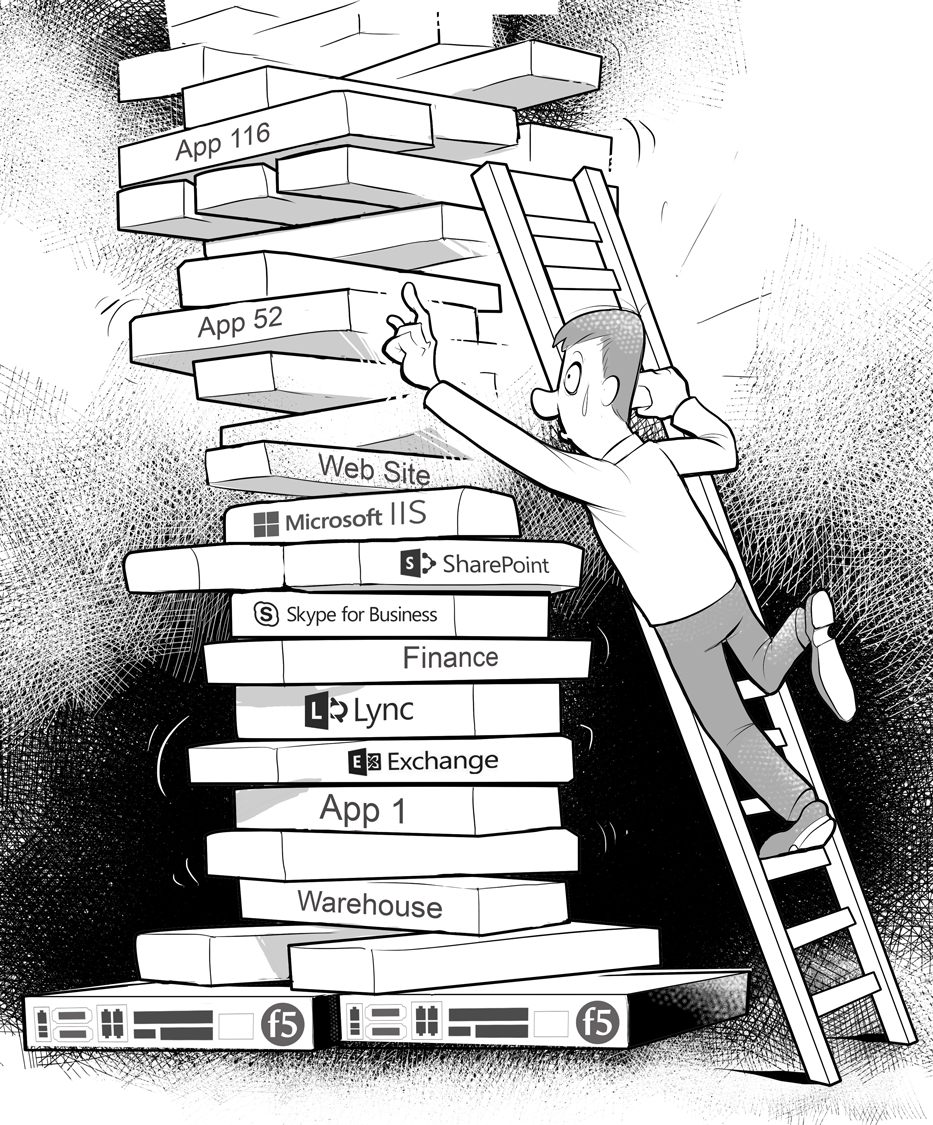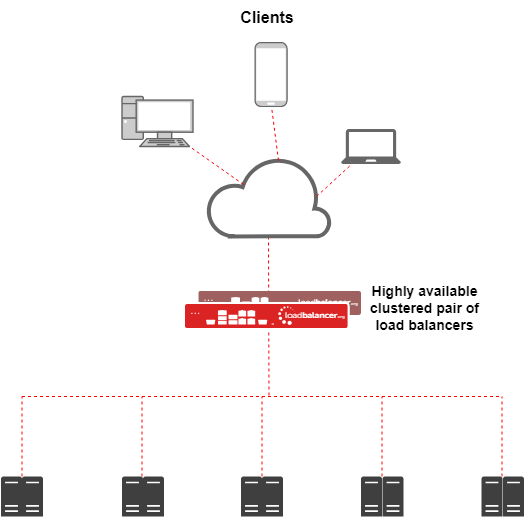
We seem to get this question quite frequently. So instead of giving the answer to everyone whenever we're asked, we thought it'd be best to write a blog about it.
In short you can load balance multiple apps
You can load balance many different applications and services at once. But do they need to be the same type of application? For example, could you only balance one or more mail servers - such as Microsoft Exchange, IBM Notes and Domino and Sendmail - or perhaps a set of web filters?
It is possible to do that, but you can also load balance Exchange and a Netsweeper web filter if you really wanted to. Or, if you're currently load balancing a Microsoft Exchange environment and you've recently set up some Apache web servers, you can load balance these too.
Think of all the weird and wonderful combinations you could load balance!
Any downsides?
Performance is not generally an issue when load balancing multiple applications - but maintenance is. Your load balancer could potentially be a single point of failure (that's why we recommend two of them). If someone accidentally breaks the configuration during an update, and you're running hundreds of applications through your load balancer, every application will be down unless you have backup servers.
This is what we refer to as the F5 Jenga hell problem which is perfectly illustrated in the drawing below...

How does load balancing multiple applications work?
If you're not sure what a load balancer does, this blog will bring you up to speed.
Our appliance can load balance multiple applications by distributing incoming connections across different clusters of back end ‘real servers’ that have been defined. This helps minimise downtime, ensuring highly available applications: if one back end server goes down, others are ready to pick up the slack.
In instances where there is an increase in client requests - for example, a sale on an online store - simply adding more servers to the cluster will ensure enough resources to handle the increase in network traffic. As long as you have sufficient server resources for the back ends of your various applications, it's easy to load balance multiple applications and maximise their uptime.
What do I need?
Our entry-level Enterprise R20 (hardware) and Enterprise VA R20 (virtual) appliances can load balance up to 5 different applications, each with up to 4 back end servers. This is a great solution which works well for many deployments.

If you need to load balance more than 5 applications, you could use our Enterprise MAX (hardware)/Enterprise VA MAX (virtual) appliances. These can load balance an unlimited number of different applications, each with an unlimited number of back end servers.
Hardware
The Enterprise R20 is a high performance solution which works just fine for most deployments. So this would make a great starting point. Upgrading from our R20 appliance to our MAX appliance involves changing the licence, which is simple to do and doesn't affect service. You can start off with an R20 appliance and upgrade in the future as your needs grow.
The Enterprise MAX is the same physical box as the R20, it just adds the ability to load balance an unlimited number of applications/virtual services. For example, it can manage 15,600,000 concurrent sessions - a popular option with our customers. It's key to remember that the more CPUs and RAM in the load balancer, the more connections it can control.
Do you need 10 Gigabit Ethernet? We’ve got it covered with our Enterprise 10G appliance. If you're concerned about future demands, then scaling up to the 10G may be the way forward.
If you are needing something more powerful than the 10G then scaling up to the Enterprise 40G would make sense. Meet the demands of Ultra HD Video transport and Enterprise Storage applications with backbone matched speeds. The Enterprise 40G is ideal for high throughput networks and performance lab environments.
Our top-end appliance, the Enterprise Ultra offers unbeatable performance. No environment is too challenging - and for complete peace of mind, simply add two Enterprise Ultras in HA failover mode.
Virtual
Virtual appliances can be scaled up with as many virtual CPUs and as much RAM as desired. If you are load balancing tonnes of busy applications and services, simply assign more resources to your virtual load balancer.
Cloud
We provide cloud Enterprise AWS and Enterprise Azure, which can both be controlled with either Enterprise AWS MAX or Enterprise AWS R20 for the Enterprise AWS. For Enterprise Azure we offer Enterprise Azure MAX and Enterprise Azure R20. You can compare our cloud appliances to see which platform is the best fit you. If you don't see your preferred cloud platform then let us know. There's a good chance we already support it - and if we don't, we'll be sure to get working on it for you.
To decide what would work best for you, take into account what size your business is, as well as potential future growth that may determine whether you have to scale up.
You can test our kit for yourself by downloading our free trial. Alternatively, you can schedule a demo.














